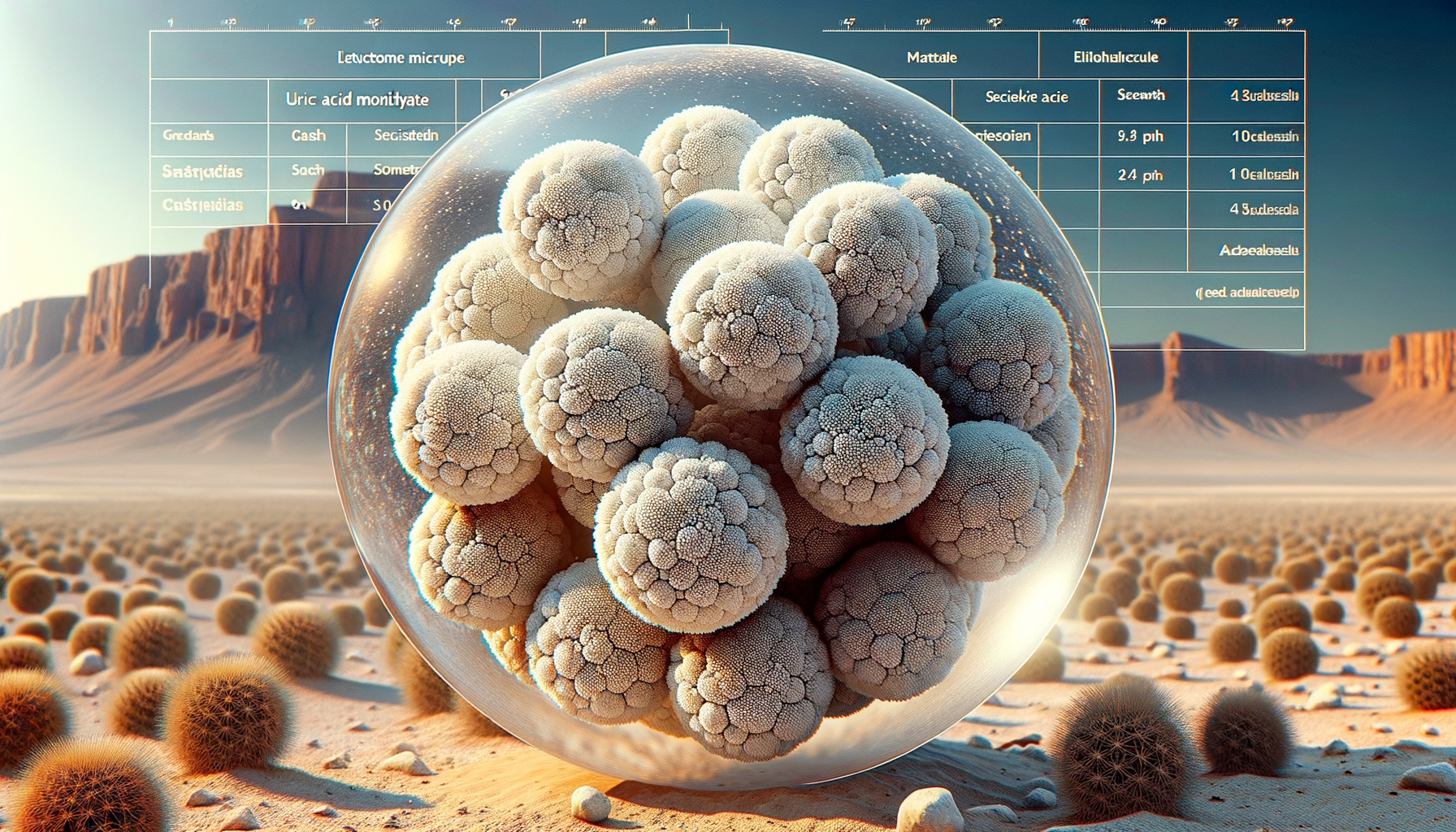No—snake urine isn’t a cure for gout or kidney stones. But a new study shows many reptiles package their waste into microscopic uric‑acid “snowballs,” and that clever chemistry could someday inspire better ways to stop painful crystals in people.
The surprising part isn’t that snakes pee solids. It’s what those solids are made of. Under an electron microscope, what looks like a chalky smear turns into a galaxy of textured spheres—each 1–10 micrometres across—built from nanocrystals of uric acid plus a molecule of water (uric acid monohydrate). That orderly design may be how reptiles safely carry a lot of nitrogen waste out of the body while using almost no water—an evolutionary trick that desert life depends on.
What the new science really says (and what it doesn’t)
- True and new: Researchers analyzed urates from more than 20 reptile species and found that, in several snakes and boas, the solids are made of 1–10 µm microspheres built from uric acid monohydrate nanocrystals. ACS press release
- Overstated in the original article: “All reptiles crystallize their waste into solid spheres.” Many—but not all—reptiles rely on semi‑solid urates. Aquatic reptiles (like crocodilians and many turtles) excrete more liquid waste (urea or ammonia). Britannica, Merck Vet Manual
- Needs nuance: The team sampled >20 species, but detailed imaging that clearly shows the 1–10 µm spheres is presented for at least three: ball python, Angolan python, and Madagascan tree boa. So “all of them had spheres” is suggested, not proven equally for every species. ACS
- Not supported: “These structures prevent damage as they move through the body.” The study shows reptiles safely excrete crystalline waste and proposes a chemistry for detoxifying ammonia; it doesn’t demonstrate prevention of tissue damage in transit. ACS
Inside the “snowballs”: the chemistry that could matter to humans Imagine a snowball made of countless tiny ice crystals. That’s the reptile urate sphere: a textured microsphere built from nanocrystals of uric acid monohydrate. The researchers also offer a tantalizing hypothesis: these spheres can trap toxic ammonia by forming a less harmful solid (ammonium urate) within the structure—a kind of chemical packaging plant for waste. Early lab evidence supports this sequestration idea, though it’s still a hypothesis that needs more testing. The Scientist, ACS
Why reptiles evolved this—and why we care
- Reptiles (especially snakes and many lizards) are often “uricotelic”: they excrete nitrogen mainly as semi‑solid urates, saving precious water—vital in dry habitats. But this isn’t universal across all reptiles. Britannica
- Humans face a different problem: when uric acid crystallizes in joints, you get gout; in kidneys, some stones are uric‑acid based (though most stones are calcium). Understanding how reptiles control crystal formation might hint at ways to keep crystals from forming—or to package and remove them more safely. NIDDK, PubMed review
The claim vs. the evidence—our verdicts
- “Snake urine could cure kidney stones and gout pain.” Overreach. The research offers inspiration, not a treatment. No snake‑urine therapy exists or is being tested in people. ACS
- “Reptiles crystallize waste into solid spheres.” Partly true with caveats. Many do produce semi‑solid urates; microsphere structure is proven in several species and suggested in more. Not all reptiles, and not always “solid spheres” at the macro level. ACS, Merck
- “The spheres are 1–10 µm and built from uric acid monohydrate nanocrystals.” Supported for the documented snakes/boas. ACS
- “This could lead to new strategies for humans.” Reasonable but speculative. The most accurate phrasing is “could inform future ideas,” not “will cure.” ACS
From snake stalls to clinic halls: what would it take to get from here to treatment?
- Map the mechanism. Identify what, besides uric acid and water, builds the spheres—are proteins or other molecules acting as scaffolds?
- Prove the detox trick. Confirm, across species and conditions, that ammonia gets reliably locked into safer solids. The Scientist
- Translate to human biology. Test whether similar chemistry can keep uric acid from forming harmful crystals in human fluids—or safely sequester it before trouble starts.
- Safety and delivery. Any candidate must work in joints or kidneys without causing inflammation, and must be safe long‑term.
- Clinical trials. Only controlled trials can tell if a reptile‑inspired approach reduces gout attacks or prevents stones.
Why this story still matters—even with the caveats
- It rewrites a textbook detail. Those white “droppings” aren’t just chalk; they are intricate microspheres with a repeatable architecture. Popular Science
- It bridges old debates. Reptiles vary in waste chemistry, but uric acid monohydrate spheres may be a unifying feature in many species, potentially explaining how different reptiles manage nitrogen safely. ACS
- It offers a new angle on human disease. Gout crystals are chemically different (monosodium urate monohydrate), and most kidney stones are calcium‑based. Even so, learning how nature controls crystallization could point to smarter prevention. PubMed review
How we checked this We compared the original claim to the American Chemical Society’s summary of the new Journal of the American Chemical Society paper, plus independent reporting and reference texts on reptile physiology and human disease:
- ACS press release (Oct. 22, 2025): reptile urate microspheres, composition, size, and translational framing. https://www.acs.org/pressroom/presspacs/2025/october/reptiles-pee-crystals-and-scientists-are-investigating-what-theyre-made-of.html
- The Scientist: mechanism hypothesis on ammonia sequestration; species details. https://www.the-scientist.com/snakes-pee-solids-chemical-analysis-suggests-why-73631
- Popular Science: corroborates sphere size and composition. https://www.popsci.com/science/reptile-pee-kidney-stones/?utm_source=openai
- Britannica and Merck Veterinary Manual: baseline on reptile nitrogen excretion and its exceptions. https://www.britannica.com/animal/reptile/Digestive-and-urogenital-systems?utm_source=openai | https://www.merckvetmanual.com/management-and-nutrition/nutrition-exotic-and-zoo-animals/nutrition-in-reptiles?utm_source=openai
- NIDDK and PubMed: context for kidney stones and gout in humans. https://www.niddk.nih.gov/health-information/urologic-diseases/kidney-stones/definition-facts?utm_source=openai | https://pubmed.ncbi.nlm.nih.gov/40063960/?utm_source=openai
Bottom line
- No, snake urine is not a cure.
- Yes, reptiles’ crystal‑packing trick is real and fascinating.
- Could it help humans someday? Maybe—if future research shows we can copy nature’s crystal control without causing new problems. Until then, it’s a promising idea, not a prescription.
